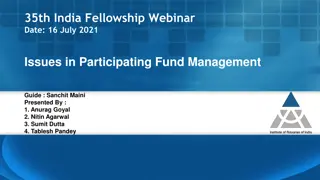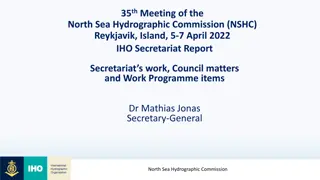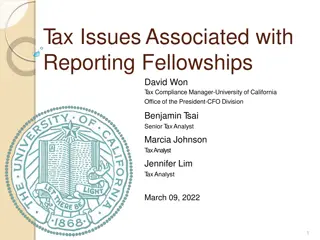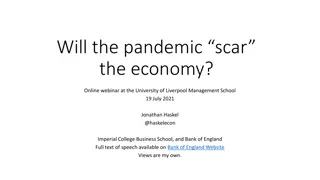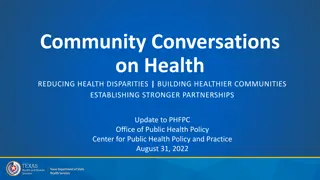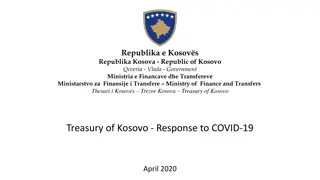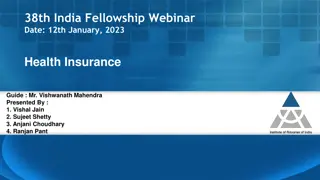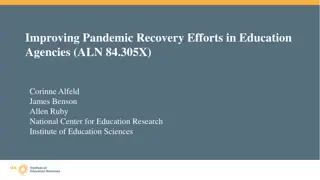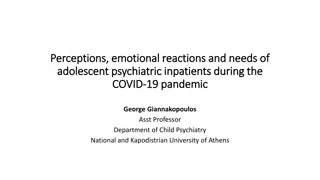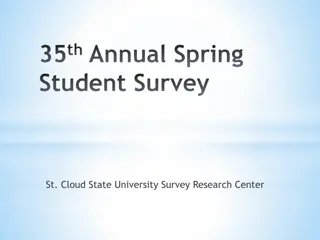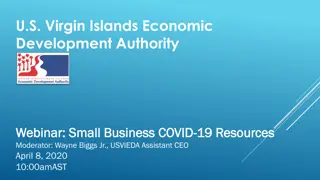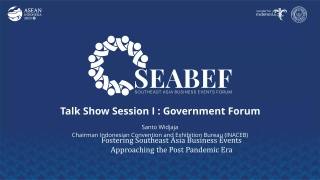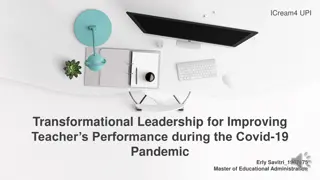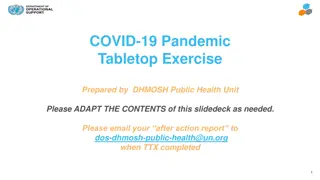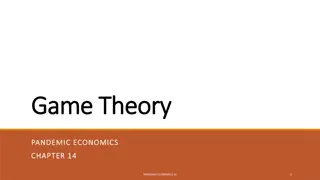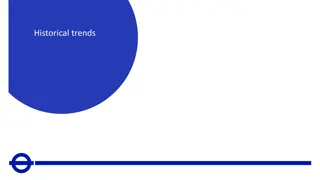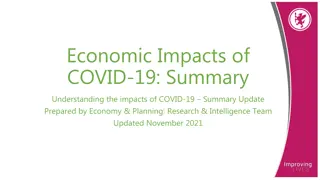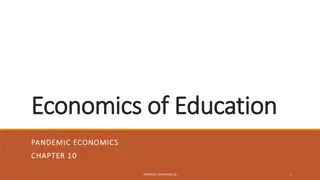Insights from 35th India Fellowship Webinar on Managing Financial Condition in Pandemic
The 35th India Fellowship Webinar held on July 10, 2021, focused on the impact of COVID-19 on financial conditions in FY 2020-21 and strategies for managing during the pandemic. The session featured Ms. Anuradha Sriram, Chief Actuarial Officer of Aditya Birla Health Insurance Co. Ltd., who shared valuable insights on COVID-19's journey, health insurance, prospective solvency impact, IBNR reserve estimation, and more. The presentation covered aspects of business and highlighted the challenges and opportunities faced by the insurance industry during these times.
Download Presentation

Please find below an Image/Link to download the presentation.
The content on the website is provided AS IS for your information and personal use only. It may not be sold, licensed, or shared on other websites without obtaining consent from the author. Download presentation by click this link. If you encounter any issues during the download, it is possible that the publisher has removed the file from their server.
E N D
Presentation Transcript
35th India Fellowship Webinar Date: July 10, 2021 Financial Condition Report FY 2020-21 - (Managing in Pandemic) Guide : Ms. Anuradha Sriram Presented By : 1. Vinay Dwivedi 2. Parvathi S 3. Rahul Mamodiya 4. Arthi Narasimhan
Ms. Anuradha Sriram Anuradha Sriram is the Chief Actuarial Officer of Aditya Birla Health Insurance Co. Limited (ABHICL) - a joint venture between the Aditya Birla Capital and MMI Holdings of South Africa. With 28 years of rich work experience, Anuradha joined ABHICL in 2016, wherein she oversees different aspects of Actuarial function. Additionally, she is responsible for the product function as well as product design and group portfolio management in the Company. Before joining ABHICL, she worked with the Life Insurance Corporation of India (LIC) in various capacities and Willis Towers Watson India as the Benefits India segment Director - overseeing the business for a period of four years. Anuradha has been instrumental in launching the first of its kind unique wellness proposition in India in Health Insurance, which has been really well received by customers and distributors. She works closely with relevant internal and external stakeholders in the Insurtech/ FinTech space to identify emerging trends that could be leveraged for product innovation/ solution/ delivery efficiencies. According to her Discipline is non negotiable - be it with health or at work . www.actuariesindia.org
FCR Impact of COVID-19 Background Agenda COVID-19: Journey so far Health Insurance Company Having wide product range Sales & Strategy FCR presentation to the Board Re/Pricing Considerations Prospective Solvency Impact of COVID-19 (incl. Wave-2) IBNR Reserve Estimation Covering various aspects of Business Other Points www.actuariesindia.org
COVID-19: Journey so far Daily Confirmed Cases : PAN India 450 400 Numbers in Thousands Wave 2 (Apr'21 - Jun'21) Wave 1 (Aug'20 - Oct'20) Moving to Normalcy (Nov'20 - Mar'21) Unlocking (Jun'20 - Aug'20) Lockdown (Apr'20 - Jun'20) 350 COVID-19 Infection Trend 300 250 200 150 100 50 - Source: https://api.covid19india.org/csv/latest/case_time_series.csv 165% COVID LR Non COVID LR Accident Month wise Indemnity LR 105% Trend of COVID & Non COVID Claim Ratio 120% 90% 80% 75% 70% 70% 70% 65% 60% 60% 60% 70% 55% 45% 25% 30% 20% 20% 45% 10% 35% 25% 35% 25% 15% 20% 55% 55% 55% 50% 50% 50% 45% 45% 45% 40% 35% 35% 35% 30% 30% 20% FY 19- 20 Apr-20 May-20 Jun-20 Jul-20 Aug-20 Sep-20 Oct-20 Nov-20 Dec-20 Jan-21 Feb-21 Mar-21 Apr-21 May-21 Jun-21 * Impact of COVID over Non COIVD Claims www.actuariesindia.org
Sales & Strategy Favourable Unfavourable Recommendations Customer access during lockdown Increased awareness Enriched online on- boarding journey Attracting younger population Retail & Group Affinity Business Affinity biz affected e.g. banks, travel End to End Digitalization Market penetration Panic buying Selective Lapsing Regular awareness campaigning Direct channel growth Tough competition from GI Companies Customer centricity Increased renewals Focus on quality biz. Up-selling / Top-up Uncertainty over LR Increased awareness Became unaffordable for few SMEs Diversification Group E/E Business COVID-19 specific coverage Focus on quality business Soft market rates www.actuariesindia.org
Sales & Strategy Cons Pros Uncertainty (VUCA) Increasing awareness Promoting COVID products over mainstream products Short term products Affordability Less waiting period - Misuse / fraud Increasing customer base Mis-selling by agents - product coverage Cross sell Brand awareness Customer access via virtual meetings (travelling cost) Using means of digitalization (operation cost) Efficient Sales Less investment in physical branches (rental cost) www.actuariesindia.org
Re/pricing Considerations Medical Inflation Ageing of portfolio (Duration impact) Why re- pricing? Modern treatment Pandemic Impact Existing Products New Products General Future Inflation Competition benchmarking Recouping Losses due to COVID-19 Expense mgmt. Regulatory requirement Uncertainty w.r.t. COVID-19 Leading the market Benefit structure Target market Data (in-house / industry / global) Reinsurance support Pilot product experience Historical performance base line analysis (pandemic free world) Frequency / Severity drivers of poor exp. Industry experience Meeting SH s & PH s expectation Change in biz. mix Portfolio level strategy Selective lapsing Re-pricing is not a panacea for all ills www.actuariesindia.org
Re/pricing Considerations Possible future waves & their intensity Vaccination drive & its impact New variants & their spread Impact on Non COVID Hospitalization Post COVID impact on Health COVID Uncertainty Less travelling Stringent travel rules Flight cancellations Portfolio diversification Tie up with overseas TPA Loading for COVID Emergency hospitalization Reinsurance arrangements Travel & Global Health Scenario 1 Scenario 2 OR Tentative Re-pricing (3 Years Horizon) If SHs want to recoup losses due to COVID Price Increase up to 10% Considering losses due to COVID as one time Price Increase up to 8% www.actuariesindia.org * Price increase is subject to competitive positioning
Prospective Solvency 1.74 1.72 1.75 1.98 Solvency Ratio & its projection 31st Mar 2024 Projected 31st Mar 2023 Projected 31st Mar 2022 Projected 31st Mar 2021 Actual Solvency Management: Regular monitoring Plan Solvent all time SHs willing to infuse capital, when required Most sensitive to Claim Ratio - monitoring Liquidity management Reinsurance Expense management h h Scenario 1 Scenario 2 Base Scenario d RegulatoryLimit d 1.75 1 Sensitivity Analysis of Projected Solvency as at 31st Mar 2022 1.50 2.11 1.95 1.87 1.77 1.74 1.63 1.58 1.30 Soft Limit: 1.70 Alarm Limit: 1.60 Regulatory Limit: 1.50 New Business Volume Scenario 1: +5% Scenario 2: -5% Persistency Scenario 1: +20% Scenario 2: -20% Expenses Scenario 1: +5% Scenario 2: -5% Claim Ratio Scenario 1: +10% Scenario 2: -10% www.actuariesindia.org 1. Additional Capital of INR 40 Cr required to meet Regulatory Limit
IBNR Reserve Estimation IBNR* + OSLR Reasons for Increase in Reserves 150 INR Crores Portfolio growth by 27% Change in reporting patterns / development factors (COVID claims - higher reporting delay) Significant surge in COVID claims (contributing 49% of reserve at May 21 end vs 23% at Mar 21 end) Development in COVID claims (+ve IBNER) Increased severity (higher inflation, change in treatment protocol, increase in consumption, disease mix) Settlement delay of CS COVID claims increasing OSLR UPR expected to cover claim; hence no PDR 107 INR Crores 46% as at 31.03.20 as at 31.03.21 High volatility; hence estimation risk MAD provided for Validation check of results using frequency severity method Obtained peer review (as per IAI guidelines i.e. APS 33) No adverse comments in IRDAI valuation meet for FY 2019-20 * IBNR includes IBNER and Margin for Adverse Deviation (MAD) Reserve Adequacy www.actuariesindia.org
Other Points Risk Characteristics Enterprise Risk Management Operational Risk (BCP & DR) Need for Pandemic / Systemic Risk-level policy (Wake-up call) Data-based insights for risk-management strategy Early warning crisis event metrics Resilience metrics Risk aggregation Cyber Risk Compliance Risk Liquidity / ALM Risk Credit Risk Thank You www.actuariesindia.org
Annexure www.actuariesindia.org
Solvency Ratio Computation An Insurance company prepares a statement of solvency margin on a monthly basis to estimate the solvency position. Solvency ratio is estimated as Available Solvency Margin (ASM) Required Solvency Margin (RSM) Available Solvency Margin (ASM) is the sum of excess in policyholder s fund and shareholder s fund after covering liabilities. Required Solvency Margin (RSM) is the higher of RSM 1 and RSM 2 where RSM 1 is based on premium and RSM 2 is based on claims. Factor A and Factor B for Health, Accident and Travel (HAT) lines of business is 0.75. This arrangement ensures that the minimum retention threshold used for the solvency computation is restricted to 75%. www.actuariesindia.org


